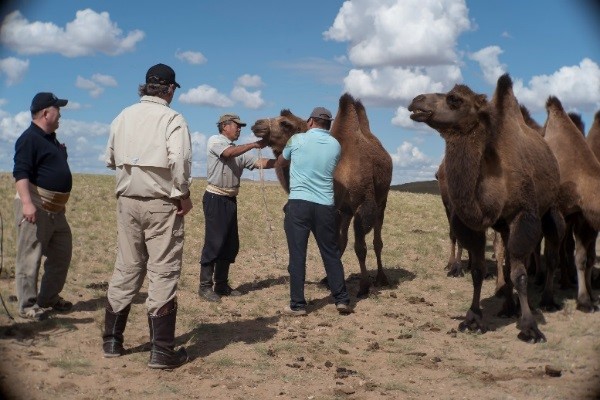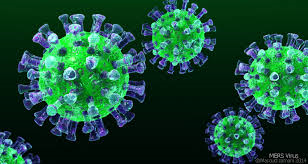Pathogen of the Month - 2017 Archive

December Pathogen of the Month:
Middle East Respiratory Syndrome (MERS)
What is it?
|
CEEZAD director Dr. Juergen Richt (second from left) working with a MERS diagnostic team in Mongolia in 2017. |
Middle East Respiratory Syndrome, also known as MERS-CoV, is a viral respiratory disease of humans and camels. Most people infected with MERS develop severe acute respiratory illness including fever, cough, and shortness of breath. The illness is spread through a type of virus known as a coronavirus (hence the designation CoV).
History
The first confirmed case was reported in Saudi Arabia in 2012. Egyptian virologist Dr. Ali Mohamed Zaki isolated and identified a previously unknown coronavirus from the patient's lungs. The isolated cells showed cytopathic effects in the form of rounding and syncytia formation. A second case was found in September 2012, a 49-year-old male living in Qatar presented with similar flu symptoms, and a sequence of the virus was nearly identical to that of the first case. In November 2012, similar cases appeared in Qatar and Saudi Arabia. Additional cases were noted, with deaths associated, and rapid research and monitoring of this novel coronavirus began.
Mode of transmission
|
The MERS coronavirus: Wikipedia images |
The predominant method of transmission to humans is via contact with bodily fluids from infected camels. The Centers for Disease Control and Prevention (CDC) also lists MERS as transmissible from human-to-human. Transmission from infected patients to health care personnel has also been observed. Clusters of cases in several countries are being investigated.
It is possible for subclinical MERS infections to occur; this is when the patient does not develop symptoms. Early research has shown that up to 20 percent of seropositive cases in humans had no MERS-specific clinical signs in their blood.
Where is MERS?
Just since October of 2017, evidence of camels carrying MERS antibodies have been found in Burkina Faso and Israel, and more than 1,730 actual cases of the disease have been reported in Saudi Arabia and Oman. That total includes more than 700 fatalities. Most patients have a history of direct contact with camels. The disease is judged to be widespread in the Arabian peninsula and North Africa. It is not, however, found in bactrian camels.
What is CEEZAD doing about MERS?
Dr. Juergen Richt, CEEZAD’s director, and other CEEZAD personnel have for the past several years traveled to the Middle East and also to the Gobi Desert in order to participate in diagnostic and preventive missions with a goal of restricting the advance of the disease.
- - - - - - - - -
Sources: CEEZAD, Centers for Disease Control, World Health Organization, promedmail.org

